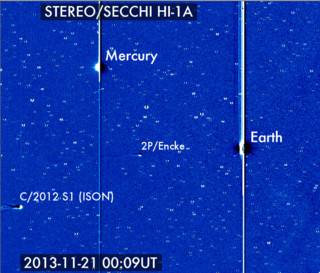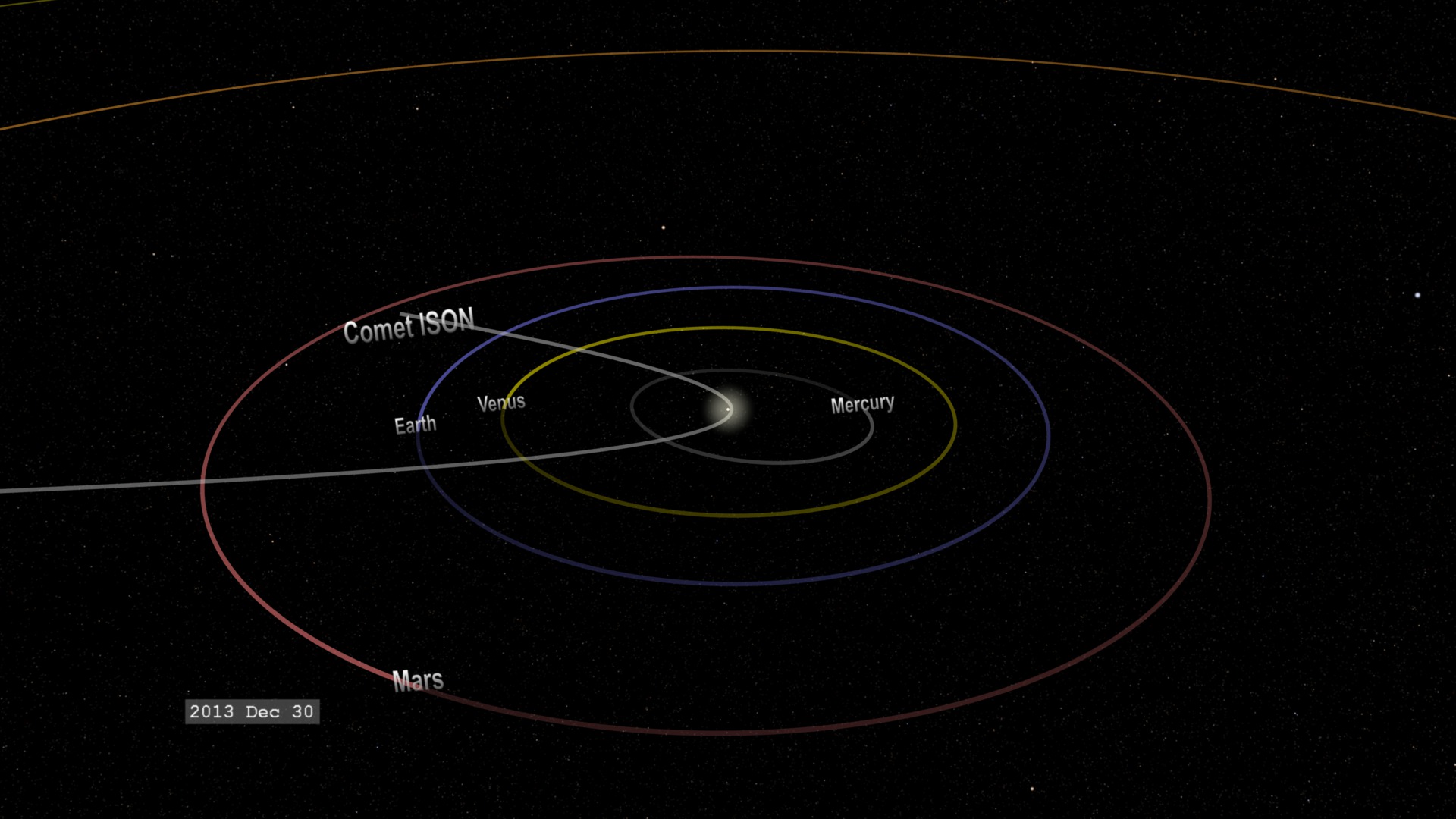Comet ISON before and during Perihelion
After a year of observations, scientists waited with bated breath on Nov. 28, 2013, as Comet ISON made its closest approach to the sun, known as perihelion. Would the comet disintegrate in the fierce heat and gravity of the sun? Or survive intact to appear as a bright comet in the pre-dawn sky?
Some remnant of ISON did indeed make it around the sun, but it quickly dimmed and fizzled as seen with NASA's solar observatories. This does not mean scientists were disappointed, however. On Dec. 10, 2013, researchers presented science results from the comet's last days at the 2013 Fall American Geophysical Union meeting in San Francisco, Calif. They described how this unique comet lost mass in advance of reaching perihelion and most likely broke up during its closest approach, as well, as summarized what this means for determining what the comet was made of. The panel shared results from the Solar and Heliospheric Observatory (SOHO), the Solar Terrestrial Relations Observatory (STEREO), the Mars Reconnaissance Orbiter (MRO) and MESSENGER to present a picture of ISON's trip around the sun, which appears to have led to its demise. The panel also reported on why ISON was not seen in images from the Solar Dynamics Observatory (SDO).

MESSENGER's narrow-angle camera series-of-stills has potential to reveal outburst from ISON in action.
MESSENGER's narrow-angle camera stills (above) as an animated mpeg.

Comet ISON brightens noticeably during a single day of the MESSENGER Monitoring Campaign. Left: Nov. 16, 2013, 01:42 UTC. Right: Nov. 16, 2013, 22:53 UTC
This movie shows imagery of Comet ISON from NASA's Solar and Terrestrial Relations Observatory, or STEREO, taken by the Sun Earth Connection Coronal and Heliospheric Investigation, or SECCHI, instrument. The movie covers Nov. 21 to Dec. 6, 2013.
Credit: NASA/STEREO/NRL

This image of Comet ISON was captured by the European Space Agency and NASA's Solar and Heliospheric Observatory, or SOHO, using the Solar Ultraviolet Measurements of Emitted Radiation, or SUMER, instrument, which is an ultraviolet telescope and spectrometer that is no longer often used on SOHO. It was turned on specifically to take images of ISON during perihelion over the course of Nov. 27 – 29, 2013.
Credit: ESA/NASA/SOHO
Credits
Please give credit for this item to:
NASA's Goddard Space Flight Center. However, individual items should be credited as indicated above.
-
Writer
- Karen Fox (ADNET Systems, Inc.)
Release date
This page was originally published on Tuesday, December 10, 2013.
This page was last updated on Wednesday, May 3, 2023 at 1:51 PM EDT.

